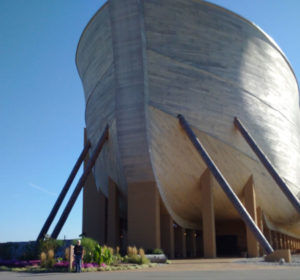I have written blog entries related to the Exodus on two other occasions and I am returning to the topic again. I’m returning to it again because over this year (2020) I have been reviewing the film series, “Patterns of Evidence.”
Science and the Exodus (2013)
The Exodus and the Corona Virus (April 2020)
“Patterns of Evidence” has been a very significant series. It does a great job of laying out the issues in an understandable way for people. Most of the series of films was released in Theaters, except for the last film which was released online and then sold on DVD and Blue Ray discs. The first film was “Patterns of Evidence: Exodus”, second was “The Moses Controversy” (this was in two parts), third was “The Red Sea Miracle Part 1”, then the final film was “The Red Sea Miracle Part 2.” The first film addresses mainly the date of the Exodus and the historical and archeological evidence of the Israelites in Egypt and that they moved to Canaan. The second film addresses the controversy about the question of could Moses have written the Pentateuch, including Exodus. It makes the case that there was an ancient written script that was used in Egypt and evidence for the same form of writing shows up in Canaan. Some scholars make a case that this ancient form of writing, referred to as “proto-sinaiitic” is related to ancient Hebrew as well as other ancient languages of the people in Canaan. Then the last two films explain two primary approaches to relating the Biblical account of the Exodus sea crossing to archeological evidence. One is called the “Egyptian Approach” and the other the “Hebrew Approach.” There are also other approaches mentioned in the films, including the view of Colin Humphreys (which I addressed in 2013 in my blog article “Science and the Exodus” linked above).
Scholars
This film series interviews many scholars of different kinds, which is one of it’s strengths. Many programs have been produced for television on the Exodus. But most of these programs either don’t use well qualified sources or they don’t do an adequate job of seriously investigating all sides of the issues. Most documentary programs pertaining to the Bible that show up on television are very poorly researched and they seem to be designed more to present dramatic claims or put forward one person’s point view. They aren’t designed to look at all sides of the issue. In the Patterns of Evidence videos you hear from many scholars who are skeptical of the Bible, to different degrees. But you also hear from some really good Bible scholars, and other scholars that have expertise in particular issues that are relevant, such as geography, engineering, or semitic languages. You hear from both agnostics and Bible believing scholars. This is actually rarely done well in documentaries.
Scripture
Often Bible related documentaries don’t really handle the Scripture carefully enough. Also, you can’t adequately deal with many questions about the Bible and history in one relatively short program. So I am glad to see this series of films delving into the questions more in-depth. It has answered a number of questions of mine and confirmed some things I’ve found in my own research. So I would highly recommend the Patterns of Evidence series. I hope that people will take the time to see the entire set of films so they will get the whole picture. Some questions do not have just one totally settled answer. There may be more than one possible answer. The last two films are like this, on the Red Sea miracle. If you expect these films to give a simple answer to the question of “Where did the Exodus sea crossing take place?” you may be disappointed. I’d say it presents five possible sites for the Red Sea crossing. But to me it narrows down to two. I think it comes down to either Nuweiba beech roughly in the middle of the Gulf of Aqaba or the area around the Southern outlet of Aqaba. It may be that how you arrive at your own conclusion may be just as important as which answer you accept.
An issue that kept coming up in my mind as I watched the programs was, as it inteviewed a scholar, I kept wondering how much does this scholar believe the Bible? Sometimes well meaning believers of different backgrounds come to different conclusions. But in the films you often see some of the differences between skeptical scholars and Bible believing scholars. Hence the two approaches, the “Egyptian approach” and the “Hebrew approach.” Sometimes the connections between certain things is not so clear as I would like it to be. But still, I think plausible answers are presented. The Exodus story starts with miracles and the Red Sea crossing question makes you wrestle with how you view miracles. It is important to be careful in interpreting Scripture when you are weighing what it says against secular scholarship. It is not always Christian scholars who find archeological evidence agreeing with the Bible. Also, Christian archeologists often don’t agree with each other. But this does not mean there are no answers. It does mean you have to put some effort into finding satisfying answers. I tend to go along more with the Hebrew approach in the Patterns of Evidence films, but I don’t mean to ignore the secular scholars. The Patterns of Evidence films did make some issues clearer to me about 1) the date of the Exodus versus scholarship about ancient Egypt, 2) a possible method of writing existed that Joseph and Moses could have used, 3) problems with the Red Sea crossing being in the Nile Delta region, and 4) the reasons to believe the Red Sea (or Reed Sea if you like) was somewhere along the Gulf of Aqaba.
More
There are more films coming and other videos that seem to be offshoots of the series. One set of these I purchased was called “The David Rohl Lectures.” David Rohl is an archeologist in the films and I believe he is an agnostic. I was once an agnostic so I was interested in what he had to say. This video set consists of four lectures, one about the Israelites in Egypt, one on Dr. Rohl’s view of the Exodus, and two about Kings and events during ancient Israel’s history. The last two had a lot of new information to me and they are quite good. The great thing to me about Dr. Rohl’s work is how it shows how the Biblical events do line up with archeological evidence regarding timelines. But he also has to buck against some accepted history to show this. So it shows problems that have existed with secular scholarship for a long time.
Another set of programs related to the series is new. It is a series of four programs by Dr. Douglas Petrovich, who also appears in the Patterns of Evidence films. He has wide-ranging qualifications both regarding Biblical languages and historically. He is saying there is evidence the ancient proto-sinaiitic written script mentioned in the films was the first form of Hebrew writing. Also, he says it was the first alphabetic form of writing. He is not saying it was the first language or the first form of writing. Prior to it there were a couple of other forms of writing but they were not alphabetic. They consisted more of symbols representing ideas, such as ancient cuneiform and heiroglyphics. We all learn the English alphabet in America and other countries. But what is an alphabet? It’s where the characters represent sounds in the spoken language. Representing ideas phonetically using a written alphabet made it easier for more people to learn how to write than using cuneiform or heiroglyphics. Dr. Petrovich’s ideas are going to be controversial in the scholarly community. But that means I have to hear it.
Evidence about the past is never 100% complete. So however far you go in pursuing answers to the “why believe” questions, you make a decision at some point to choose what you will believe. I’ve found there is much more evidence for the truth of the Bible than people think there is. Biblical Christianity is based on historical events much more than other religions. I think more people need to see the Patterns of Evidence videos. They may challenge your assumptions, but I think they do it in a healthy way.
For those who are interested in learning more about all this, I’d go to the website below and sign up for an email newsletter that is called “Thinker Updates.” They are full of great information where you can dig into topics dealt with in the films. Other Christian organizations are now selling these videos as well.
https://patternsofevidence.com/



